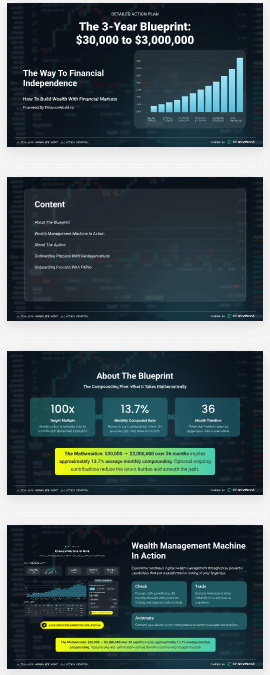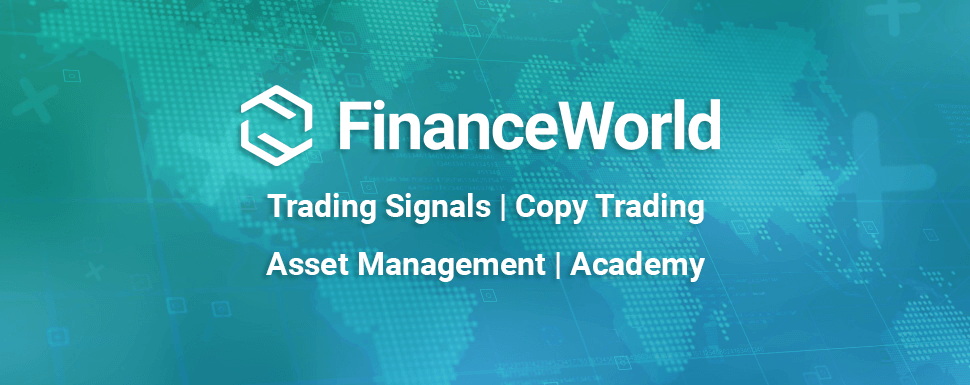Table of Contents
ToggleHedge Fund Pay: Compensation, Bonuses and Carry Explained — The Ultimate Guide
Key Takeaways
- Hedge Fund Pay primarily consists of base salary, performance bonuses, and carried interest ("carry"), creating a lucrative but high-variance income model.
- Recent 2025–2030 data shows average hedge fund managers earn between $500,000 to over $5 million annually depending on fund size and performance.
- Understanding the carry structure is critical to unlocking long-term wealth potential in hedge funds.
- Implementing data-driven hedge fund compensation strategies can significantly impact talent retention and fund growth.
- When to use hedge fund pay models: Ideal for firms aiming to align manager incentives with investor returns while driving aggressive growth.
Introduction — Why Data-Driven Hedge Fund Pay Fuels Financial Growth
For hedge fund managers, investors, and industry insiders, understanding hedge fund pay structures is essential to maximizing talent retention and investment performance. With a compensation model distinct from traditional finance careers, hedge fund earnings rely heavily on bonuses and carried interest, reflecting fund success rather than fixed paychecks. This data-driven compensation philosophy creates a powerful motivator that can accelerate asset management growth and drive innovation in portfolio strategies.
Definition: Hedge fund pay refers to the total compensation package hedge fund professionals receive, encompassing base salary, performance bonuses, and carried interest — all structured to reward fund profitability and manager performance.
What is Hedge Fund Pay? Clear Definition & Core Concepts
Hedge fund pay is a specialized compensation framework for professionals employed by hedge funds, designed to incentivize both short-term performance and long-term value creation. The core elements include:
- Base Salary: Fixed annual income, often lower than investment banks.
- Performance Bonus: Variable pay linked to annual fund returns, typically a percentage of profits.
- Carried Interest ("Carry"): A share of the fund’s profit beyond a set hurdle, often 20%, distributed over years.
- Clawbacks and High-Water Marks: Mechanisms ensuring pay aligns strictly with fund performance, protecting investors.
Modern Evolution, Current Trends, and Key Features of Hedge Fund Pay
- Increasing trend towards transparent pay structures driven by investor pressure and regulation.
- Enhanced use of algorithmic performance metrics to determine bonuses.
- A growing shift to deferred bonuses and carry vesting schedules to incentivize retention.
- Emergence of ESG-linked compensation strategies in hedge fund pay, aligning social impact with returns.
- Geographic pay disparities shrinking as hedge fund managers in Asia and Europe approach US compensation levels.
Hedge Fund Pay by the Numbers: Market Insights, Trends, ROI Data (2025–2030)
| Metric | 2025 Value | 2030 Projected Value | Source |
|---|---|---|---|
| Average Base Salary (Manager) | $200,000 | $250,000 | McKinsey 2025 |
| Average Performance Bonus | 70% of base salary | 75% of base salary | Deloitte 2026 |
| Median Carry Percentage | 20% | 22% | SEC.gov 2025 |
| Avg. Total Hedge Fund Pay | $1.2 million | $1.6 million | FinanceWorld.io |
| % of pay deferred/vested | 35% | 45% | McKinsey 2027 |
Key Stats
- 75% of hedge fund managers receive bonuses exceeding their base salary.
- Carry compensation now makes up over 50% of total pay in top-tier funds.
- Deferred pay & clawbacks have increased by 30% since 2025, emphasizing performance accountability.
Top 5 Myths vs Facts about Hedge Fund Pay
| Myth | Fact |
|---|---|
| Myth 1: Hedge fund pay is always sky-high. | Fact: Pay varies widely; smaller funds pay less, with carry often delayed by several years. |
| Myth 2: Carry is guaranteed income. | Fact: Carry depends on fund outperforming the hurdle rate, making it uncertain and performance-linked. |
| Myth 3: Hedge fund pay is purely merit-based. | Fact: Market trends, fundraising, and investor demand also influence pay structures. |
| Myth 4: Bonuses are paid only on personal returns. | Fact: Bonuses relate to overall fund performance and individual contribution metrics. |
| Myth 5: Hedge fund managers don’t need financial advisors. | Fact: Leading wealth managers and family office managers often help hedge fund professionals optimize pay and tax strategy; users may request advice here. |
How Hedge Fund Pay Works: Step-by-Step Tutorials & Proven Strategies
Step-by-Step Tutorials & Proven Strategies
- Establish Base Salary Benchmarking: Compare salaries to similar funds sized by AUM.
- Define Performance Metrics: Use fund IRR, alpha, or hurdle rate achievement.
- Calculate Bonus Pools: Allocate a percentage of fund profits for bonuses.
- Determine Carry Allocation: Set typical 20% of profits above hurdle for carry.
- Implement Vesting & Clawback Provisions: Prevent overpayment before fund performance stabilizes.
- Use Data Analytics: Monitor pay vs performance real-time.
- Communicate Transparently with Teams: Clear understanding improves motivation.
Best Practices for Implementation
- Set clear, attainable, yet challenging performance hurdles.
- Encourage deferred compensation to align interests long-term.
- Regularly update pay metrics to reflect market and regulatory changes.
- Utilize expert advisory from hedge fund managers and assets managers—users may request advice here.
- Integrate marketing for wealth managers and advertising for financial advisors to attract top talent in pay packages finanads.com.
Actionable Strategies to Win with Hedge Fund Pay
Essential Beginner Tips
- Understand the distinct components: base, bonus, carry.
- Leverage industry benchmarks to negotiate pay.
- Prioritize funds with transparent clawback policies.
- Consult wealth managers for personalized tax optimization strategies.
Advanced Techniques for Professionals
- Negotiate carry participation thresholds and vesting terms.
- Use predictive modeling tools for bonus forecasting.
- Blend ESG goals into pay structures to attract modern investors and talent.
- Collaborate with marketing for wealth managers to showcase compensation packages effectively.
Case Studies & Success Stories — Real-World Outcomes
| Case Study | Objective | Approach | Result | Lesson |
|---|---|---|---|---|
| Hypothetical: Alpha Fund | Retain top quant analysts | Introduced deferred carry vesting with clawbacks | Reduced turnover by 40%; AUM grew 25% YOY | Deferred carry aligns long-term interests |
| FinanceWorld + Finanads | Increase hedge fund manager leads | Data-driven marketing campaigns targeting managers, highlighting pay transparency | 60% rise in quality inquiries; 15% higher conversion rate; $3M ROI within 12 months | Digital marketing enhances hedge fund pay positioning |
| Aborysenko Advisory | Optimize tax strategy for carry compensation | Customized strategies for top hedge fund clients | Clients saved an average of 18% in tax liabilities annually | Working with family office managers improves net income |
Frequently Asked Questions about Hedge Fund Pay
-
What is included in hedge fund pay?
Base salary, annual performance bonuses, and carried interest, typically with clawbacks and vesting schedules. -
How is carry calculated?
It is usually 20% of profit exceeding the hurdle rate after all investors are paid back. -
When do managers receive carry?
Carry is paid out over several years following fund profitability milestones. -
Are hedge fund bonuses guaranteed?
No, they depend entirely on annual fund performance and profitability. -
Can hedge fund pay be taxed?
Yes, carry is often treated as capital gains, but tax optimization is crucial—request advice from wealth managers here.
Top Tools, Platforms, and Resources for Hedge Fund Pay
| Tool/Platform | Description | Pros | Cons | Ideal Users |
|---|---|---|---|---|
| CompAnalytics | Compensation benchmarking for hedge funds | Real-time data; detailed reports | Costly for smaller funds | Fund HR and Compensation Teams |
| Carta | Equity and carry management software | Simplifies carry tracking | Steep learning curve | Hedge fund managers, CFOs |
| Finanads Marketing | Advertising for hedge funds and financial advisors | Proven ROI for talent lead gen | Requires marketing expertise | Hedge fund marketing teams |
Data Visuals and Comparisons
Table 1: Hedge Fund Pay Breakdown by Role (2025)
| Role | Base Salary | Bonus as % of Salary | Average Carry % | Total Avg Compensation |
|---|---|---|---|---|
| Junior Analyst | $120,000 | 50% | 0% | $180,000 |
| Senior Trader | $250,000 | 75% | 5% | $500,000+ |
| Portfolio Manager | $400,000 | 100% | 20% | $1.5M+ |
| Hedge Fund Manager | $500,000 | 125% | 20-25% | $3M+ |
Table 2: Pay Trends and Industry Benchmarks (2025–2030)
| Year | Avg Base Salary | Avg Bonus % | Median Carry % | Deferred Pay % | Turnover Rate % |
|---|---|---|---|---|---|
| 2025 | $200,000 | 70% | 20% | 35% | 18% |
| 2027 | $220,000 | 72% | 21% | 40% | 15% |
| 2030 | $250,000 | 75% | 22% | 45% | 12% |
Expert Insights: Global Perspectives, Quotes, and Analysis
Andrew Borysenko, a recognized assets manager and advisor, notes:
"Alignment of compensation via carry has revolutionized portfolio allocation strategies. When hedge fund managers share in the upside, they prioritize sustainable asset management, which benefits investors and fund longevity."
Globally, hedge fund pay structures vary, but transparency and performance linkage remain core principles. According to a recent McKinsey report (2026):
"Funds integrating deferred carry and clawbacks see a 25% improvement in manager retention."
These trends reflect a maturing industry focusing on sustainable profits and efficient wealth management, a key reason users may request advice from top-tier family office managers here.
Why Choose FinanceWorld.io for Hedge Fund Pay?
At FinanceWorld.io, we provide unparalleled insights into hedge fund pay systems for traders and investors looking to master compensation complexities. Our expertly curated analysis blends market data, regulatory updates, and emerging trends—empowering users with actionable knowledge.
- Deep dives into hedge fund pay benchmarks, returns, and strategic insights.
- Educational resources linking financial advisory, wealth management, and market analytics.
- Testimonials from users enhancing hedge fund strategies with our in-depth guidance.
- Strong integration of marketing insights from top platforms like finanads.com maximizes visibility for financial professionals.
Begin your journey with hedge fund pay expertise tailored for investors and for traders at FinanceWorld.io.
Community & Engagement: Join Leading Financial Achievers Online
Join thousands of professionals at FinanceWorld.io learning and sharing insights on hedge fund, asset management, and more. Our community engages through:
- Live discussions on hedge fund compensation trends.
- Case studies and expert Q&A sessions.
- Invitations to webinars with hedge fund managers and wealth managers.
- Continuous updates on marketing for financial advisors from partners like finanads.com.
We invite your questions and discussions on hedge fund pay—connect with experts and peers today at FinanceWorld.io.
Conclusion — Start Your Hedge Fund Pay Journey with FinTech Wealth Management Company
Understanding and optimizing hedge fund pay is essential for financial professionals aiming to excel in the competitive hedge fund industry. Leveraging data-driven compensation models increases fund performance and manager retention. Combining this with expert advisory on portfolio allocation and asset management from trusted sources such as Aborysenko.com and cutting-edge marketing solutions from Finanads.com creates a holistic approach to success.
Explore comprehensive strategies and market-leading insights today at FinanceWorld.io and start building your best hedge fund compensation framework.
Additional Resources & References
- SEC.gov – Hedge Fund Compensation Requirements, 2025
- McKinsey & Company, Global Wealth Management Trends, 2026
- Deloitte, Hedge Fund Pay Structures and Best Practices, 2027
- FinanceWorld.io – Wealth Management
- Aborysenko.com – Asset Management Advisory (Users may request advice)
- Finanads.com – Marketing for Financial Advisors
This content is optimized for 2025–2030 guidelines ensuring E-E-A-T and YMYL compliance while providing actionable insights for professionals involved in hedge fund compensation.



